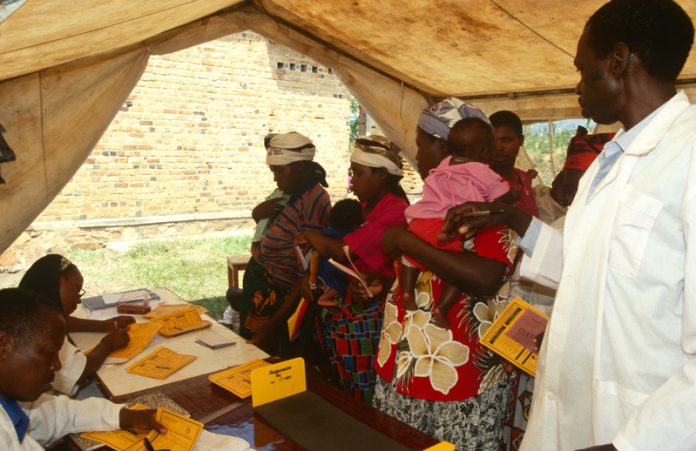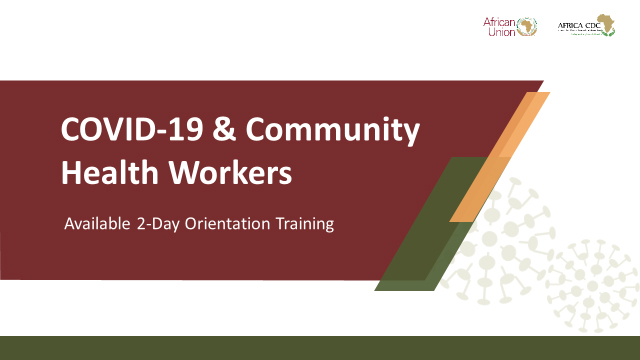Several seasoned academic experts describe the move towards strengthening public health surveillance systems in Africa
The traditional surveillance systems in Africa depend mainly on indicator-based surveillance (IBS) (1) component of the Integrated Disease Surveillance and Response (IDSR) strategy of the World Health Organization Regional Office for Africa. Strengthening the event-based surveillance (EBS) (2) component of IDSR is critical for the timely capture of health events for a prompt response. For instance, we recall the Ebola virus disease (EVD) outbreak in West Africa (2013-2016) that went unnoticed for months because of weak surveillance systems that largely contributed to late detection and response. To strengthen the surveillance systems, the Africa Centres for Disease Control and Prevention (CDC) has developed an EBS Framework as a practical guidance document, and complement to the IDSR strategy, for the initiation, implementation and rolling out of EBS in the African Union (AU) Member States (MS). The EBS strategy represents a large spectrum of data sources, and focuses on early detection of unusual signals/events and thus containing outbreaks before they could happen or spread from the primary point of occurrence. It is widely applicable, including in the settings with weak health systems and those in remote areas with inadequate conventional medical services.
Operationalisation of EBS in Africa
In its quest to strengthen EBS, Africa CDC is collaborating with the SACIDS Foundation for One Health (SACIDS), based at the Sokoine University of Agriculture (SUA). SACIDS has extended collaboration with its institutional networks, including the East, Central and Southern Africa Health Community (ECSA-HC), to develop generic and disease-specific EBS training modules with an African context prominence, targeting all levels of the health system, i.e. community, health facility, district/intermediary and national levels. We have conducted a situation analysis to identify the gaps, challenges and stages/levels of EBS implementation in the AU MS. The data generated is being used to address country-specific needs.
What is included in the training modules?
The training modules have been developed in line with the Africa CDC EBS Framework. The community-level module is designed for Community Health Workers (CHWs) who play an essential role as the primary sensors of health signals/events. The health facility level module is designed to train clinicians, nurses and other relevant healthcare professionals to report on patterns of disease or signals, (e.g cluster of illnesses) immediately to the next level of health system. The district/intermediary module is intended for the authorities responsible for disease surveillance, control and management within a district. The national-level module targets wide coverage of EBS data sources (hotline and media scanning), their establishment and operationalisation strategy.
In what formats are the training modules?
The package of the training modules for each level of the health system includes text-rich materials, PowerPoint slides, participant/user guide, facilitator guide, training programme and pre-and post-training evaluation to assess aptitude and competences acquired. Each module may be delivered to relevant audiences in three days. In addition to face-to-face module delivery, SACIDS has developed an online (digital) delivery platform that can enhance rapid and distant uptakes.
Specific-disease surveillance training module: COVID-19
As the COVID-19 pandemic transcends within rural communities where traditional global communication strategies do not outreach well, an African community-centric-led approach remains essential in delivering important health promotion messages, enhancing contact tracing, prevention and control measures. SACIDS has been implementing community-based participatory surveillance and response model and solidifying relationships with community members using different strategies, including technology-driven EBS (AfyaData) (3) since 2014. Recognising the CHWs as the essential part of the Partnership to Accelerate COVID-19 Testing (PACT) Initiative, SACIDS and Africa CDC in collaboration with the United Kingdom Public Health Rapid Support Team (UK-PHRST) and U.S. Centers for Disease Control and Prevention (CDC) have developed a two-day African-context CHWs-COVID-19 orientation module.
Purpose of the COVID-19 training module
PACT has been set up to drive forward the Africa Union Joint Continental Strategy for COVID-19, which aims to prevent the spread of COVID-19, prevent deaths from COVID-19, and reduce the social and economic harm linked to COVID-19 in Africa. The purpose of the COVID-19 training module is to give CHWs a rapid orientation to work in the disease response. It focuses particularly on CHW tasks in the TRACE component of PACT as well as how they will support the TEST and TREAT components. The module describes: a good basic understanding of COVID-19, its transmission/spread, prevention and control measures, community-based surveillance, identification of suspect cases, and how to perform contact tracing activities effectively. Other elements of the module include supporting community members who are contacts in quarantine, supporting suspect cases in a home or community facility isolation, skills to work with the community on measures to reduce COVID-19 transmission and the ability to operate safely within a community while CHWs perform their work.
Can the modules be adapted to different settings of Africa?
To be relevant to as many cultural disparity communities as possible, the modules are available in simple/plain major AU languages and can be customised according to specific-country needs/preferences. The modules focus on the hands-on learning nature of preventive, control and response measures against infectious diseases. Decisively, the training package for each module includes facilitator notes to assist the trainers on how to locally contextualise a particular concept, as they have unparalleled local insight into the medical and social needs of this protection effort. We provide technical support to enhance the adaptation of the modules in the MS.
Where can I get the training modules?
The CHW COVID-19 training modules can be downloaded freely at the Africa CDC and SACIDS websites. Other training modules are being uploaded onto these websites and will be as well freely available soon. Stay tuned.
References
(1) Indicator-based surveillance – the systematic collection, analysis and dissemination of mainly health facility-based structured data.
(2) Event-based surveillance – the organised collection, monitoring, assessment and interpretation of mainly unstructured, ad hoc information regarding health events or risks, which may represent an acute health risk.
(3) AfyaData is a set of One Health digital disease surveillance tools designed, developed and deployed collaboratively by SACIDS Foundation for One Health and authorities responsible for human and animal health, and Information, Communication and Technology specialists (www.sacids.org).
Authors
Calvin Sindato1,2, Kyeng Mercy3, Eric Beda1, Mohammed Abdulaziz3, Justin Maeda3 & Mark Rweyemamu1.
Affiliations
1 SACIDS Foundation for One Health, Tanzania.
2 National Institute for Medical Research, Tanzania.
3 Africa Centre for Disease Prevention and Control, the African Union, Ethiopia.
Please note: This is a commercial profile









